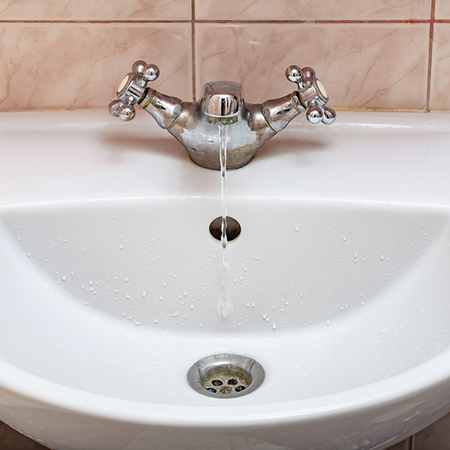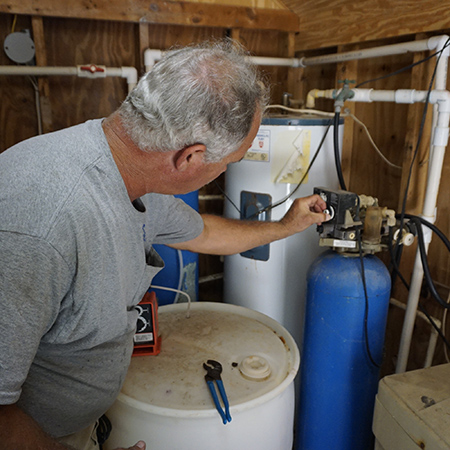Slow Flow or No Water Flow from Reverse Osmosis Faucet
Reverse Osmosis (RO) filtration is the most effective and popular whole home water purifier. It provides you with safe, clean water by filtering it through a semi-permeable membrane that catches impurities and harmful contaminants. The purified water flows into a water tank. From there, it runs to your faucets providing you with safe, clean water. Water flow issues aren’t a normal problem with an RO filtration system but they can occur.
If little to no water is flowing out of your faucets, there are 5 possible reasons.
 1. Temporary Water Flow Issues from Your Utility
1. Temporary Water Flow Issues from Your Utility
Your local water utility might be to blame if you have low to no water flow for a short period of time. Water utility companies can have low pressure temporarily due to facility issues. RO filtration systems function best with 60 psi water pressure and at least 40 psi. When it drops below that, you can lose water flow. Once the water pressure from your provider returns to normal, water will start flowing out of your tap at a normal rate.
2. A Kink in the Water Line or Unopened Water Supply Line Valve
RO filters store purified water in a tank that links to your faucets through a water line. If that water line has a kink in it or the valve isn’t fully open, it can prevent water from passing through. If only a slow trickle of water comes out of your faucets, it’s a good idea to inspect the water line for a kink. Make sure that the water supply line valve is fully open while you are checking the water line.
3. Low Pressure in the Tank
Low pressure in the RO tank can also impact the water flow in your home. The best way to test the water pressure is to empty the tank. Then use a low-pressure gauge to test the pressure. If it is below 7 or 8 psi, add air with a pump to increase it to that level. Make sure to add extra air slowly, in small amounts, so that you don’t rupture the tank’s air bladder.
4. A Ruptured Air Bladder
You can usually tell if the water tank’s air bladder is ruptured by how much water comes out of your faucet. If your water pressure starts out normal then drops to a slow, small stream after you’ve gotten about a cup of water, most likely the air bladder is ruptured. It isn’t possible to replace or repair a busted air bladder. The only solution is to replace the tank.
5. An Old RO Filter
 RO filters should be replaced every 2 years or 24 months because dirt, sediment, and other impurities build up on the membrane. As the membrane becomes clogged over time, less water can pass through to your water tank. It can take 4 to 6 hours for your water tank to fill—instead of 2 to 4—when the membrane is overdue for a replacement. A slow filling tank means less water can flow out of your faucets. If your RO filter is almost two years old or older, replacing should solve your water flow problem.
RO filters should be replaced every 2 years or 24 months because dirt, sediment, and other impurities build up on the membrane. As the membrane becomes clogged over time, less water can pass through to your water tank. It can take 4 to 6 hours for your water tank to fill—instead of 2 to 4—when the membrane is overdue for a replacement. A slow filling tank means less water can flow out of your faucets. If your RO filter is almost two years old or older, replacing should solve your water flow problem.
We hope that these tips can help you solve your water problem. If you need a hand, give us a call! The water treatment specialists on our team can replace your RO filter, swap out your water tank or investigate if the solution isn’t obvious.
